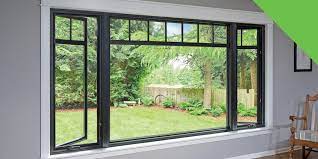Windows play a crucial role in any home, offering not just views of the outside world but also serving as sources of natural light and ventilation. However, over time, windows may wear down, become less energy-efficient, or simply fail to meet the aesthetic or functional needs of the homeowner. In such cases, window replacement St. Louis becomes a viable solution to enhance both the appearance and performance of a home. This comprehensive handbook aims to guide homeowners through the process of window replacement, providing valuable insights and practical tips to ensure a successful upgrade.
Assessing Your Needs
Before embarking on a window replacement project, it’s essential to assess the current state of your windows and determine the reasons for replacement. Begin by evaluating the condition of each window, noting any signs of damage, deterioration, or inefficiency. Common issues may include air leaks, drafts, fogging between panes, or difficulty in operation. Additionally, consider factors such as outdated aesthetics, noise infiltration, or lack of adequate insulation.
Once you’ve identified the shortcomings of your existing windows, establish your goals and priorities for replacement. Are you primarily seeking improved energy efficiency, enhanced curb appeal, or better functionality? Understanding your objectives will help you make informed decisions throughout the replacement process. It’s also crucial to set a realistic budget based on the scope of work and desired outcomes.
Choosing the Right Windows
Selecting the appropriate windows for your home involves considering various factors, including style, material, and energy efficiency. Familiarize yourself with the different types of windows available, such as double-hung, casement, sliding, or picture windows, each offering unique features and benefits. Take into account the architectural style of your home and your personal preferences when choosing window styles.
Energy efficiency is another critical consideration, especially for homeowners looking to reduce utility costs and minimize environmental impact. Look for windows with high-performance features such as low-emissivity (low-E) coatings, multiple glazing layers, and insulating gas fills. These technologies help to minimize heat transfer, prevent UV radiation, and maintain comfortable indoor temperatures year-round.
In addition to energy efficiency, evaluate the durability and maintenance requirements of various window materials, including wood, vinyl, fiberglass, and aluminum. Each material has its advantages and drawbacks, so weigh the pros and cons carefully before making a decision. Consider factors such as longevity, resistance to rot and corrosion, ease of cleaning, and aesthetic appeal.
Hiring the Right Professionals
While some homeowners may attempt DIY window replacement projects, hiring experienced professionals is often the safest and most efficient approach. Begin by researching reputable window replacement companies in your area, seeking recommendations from friends, family, or online reviews. Look for contractors with proven experience, positive customer feedback, and a track record of quality workmanship.
Once you’ve narrowed down your options, request quotes from multiple contractors to compare pricing, services, and warranties. Be wary of unusually low bids, as they may indicate subpar materials or workmanship. Instead, prioritize value and reliability when selecting a contractor for your window replacement project.
Before finalizing any agreements, verify that the contractor is properly licensed, insured, and bonded to perform the work in your area. Request references and ask about past projects similar to yours to gauge the contractor’s expertise and professionalism. Clear communication and a detailed written contract outlining the scope of work, timeline, and payment terms are essential for a successful partnership.
The Window Replacement Process
Once you’ve selected your windows and hired a reputable contractor, it’s time to prepare for the installation process. Clear the area around each window, removing furniture, window treatments, and any obstacles that may impede access. Communicate any specific instructions or preferences to the installation crew to ensure a smooth and efficient process.
On the day of installation, the contractor will begin by removing the old windows and preparing the openings for the new ones. This may involve repairing any damaged frames or sills, adjusting the rough openings, and ensuring proper alignment and fit. Once the preparations are complete, the new windows will be carefully installed, sealed, and insulated to prevent air and water infiltration.
Depending on the scope of work and the number of windows being replaced, the installation process may take anywhere from a few hours to several days. Throughout the installation, the contractor should maintain a clean and organized work area, minimizing disruption to your daily routine. Upon completion, inspect the windows carefully to ensure proper operation, alignment, and sealing before signing off on the project.
Maintaining Your New Windows
After your new windows are installed, it’s essential to establish a regular maintenance routine to preserve their appearance and performance over time. Start by following the manufacturer’s guidelines for cleaning and care, using mild detergent solutions and soft cloths to remove dirt, dust, and grime. Avoid harsh chemicals, abrasive cleaners, or high-pressure washing, as these can damage the window surfaces or coatings.
In addition to regular cleaning, periodically inspect your windows for signs of wear, damage, or malfunction. Check for loose or damaged hardware, cracked caulking, or gaps around the frames that may compromise insulation. Address any issues promptly to prevent further damage and maintain the integrity of your windows.
In conclusion, window replacement is a significant investment that can enhance the comfort, efficiency, and aesthetics of your home. By following the guidelines outlined in this handbook, you can navigate the replacement process with confidence and achieve optimal results that will benefit you and your home for years to come. Whether you’re looking to upgrade outdated windows, improve energy efficiency, or enhance curb appeal, let this handbook be your guide to letting in the light.
Write and Win: Participate in Creative writing Contest & International Essay Contest and win fabulous prizes.
















